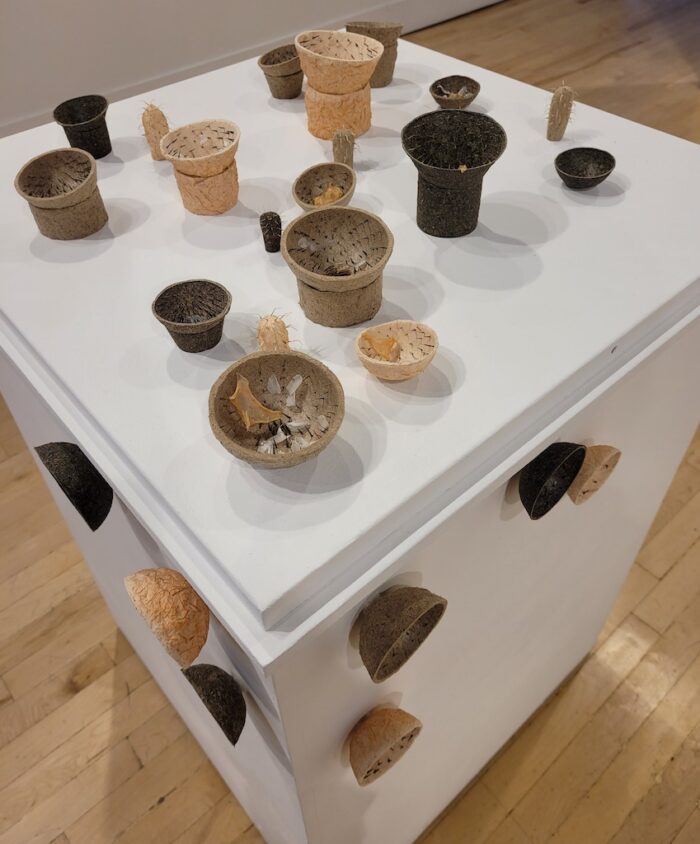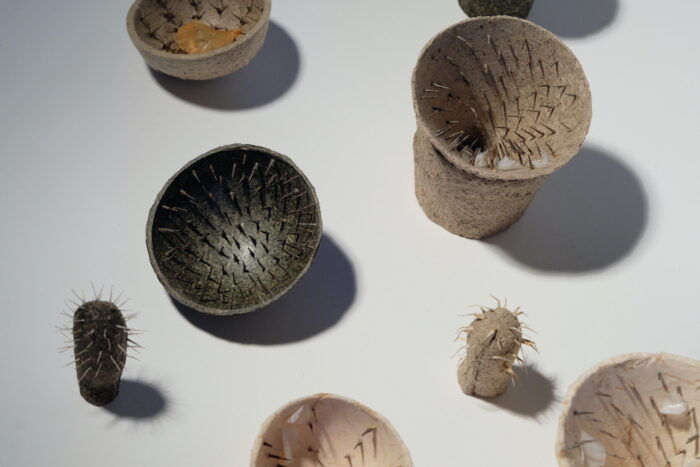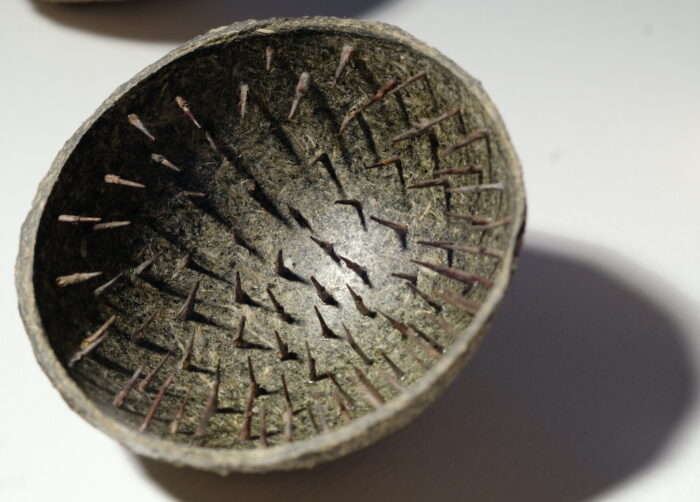
Heather Komus
Thorn Mouth
2022
Handmade paper from Canadian thistle, common burdock and corn husks with European buckthorn and other materials
Variable dimensions

Thorn Mouth (detail), image credit – Cam Johnson

Thorn Mouth (detail), image credit – Cam Johnson
Thorn Mouth – Heather Komus
Thorn Mouth investigates drought, invasive species and parasitism. Invasive species may benefit from climate change more than native species because they lack the predators and other natural selection pressures restricting them in their native climes. As the climate shifts, warming waters and longer growing seasons allow these invasive species to expand their ranges further north attaining even stronger footholds and outcompeting local species. By working with invasive and introduced species such as Canadian thistle, common burdock, European buckthorn and corn, my work speaks to the effects of invasive species and intensive agriculture on the riparian landscape. Thorn Mouth references the mouth of the parasitic sea lamprey that has invaded the Great Lakes, the dry plant forms evoking drought. Thorn Mouth compares intensive agriculture to parasitism, speaking to how the channelization of streams for farmland eliminates wetlands.
The creek chub, a local Manitoba fish, will be severely impacted by climate change because its spawning creeks have often been dry in the last few years. After witnessing a necropsy (the examination of an animal after death), I realized that the creek chub’s potential peril also included the animals relying on it, in particular a type of parasitic thorny-headed worm (Neoechinorhynchus saginatta) that lives inside the fish. Climate change stresses species in many ways, producing a ripple effect on the macro and micro scale to encompass the full ecological web they inhabit.